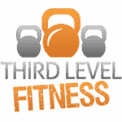Hey there! Ever wonder why some folks just seem to hit their stride and achieve their goals, while others hit roadblocks? It often comes down to their mindset and how aware they are of themselves. Your mindset is basically how you see things, and it really shapes your personal growth and what you can accomplish. By getting a handle on your mindset and knowing yourself better, you can really make the most of what you’re capable of and live a more satisfying life. We’ll look at how to build a good mindset, get past beliefs that hold you back, set and reach goals, and just understand yourself better.
Key Takeaways
- A growth mindset, believing abilities can be developed, is key to tackling challenges and learning from mistakes, unlike a fixed mindset where abilities are seen as unchangeable.
- Understanding and challenging negative self-talk and limiting beliefs is important for personal growth and achieving success.
- Daily habits like starting the day positively, exercising, practicing gratitude, and reading inspiring material help maintain a winning attitude.
- Developing self-awareness by understanding emotions, seeking feedback, and practicing mindfulness helps in making better decisions and personal growth.
- Setting realistic, achievable goals with clear timelines and breaking them into smaller steps is vital for progress and reaching your potential.
Understanding The Power Of Mindset
Have you ever noticed how some people just seem to handle tough situations better than others? It’s not magic; it’s often about their mindset. Think of your mindset as the basic attitude you have about yourself and the world. It’s like the operating system for your brain, influencing how you see challenges, learn new things, and deal with setbacks. Your mindset is a powerful tool that shapes your reality and your ability to achieve what you want. It’s not just about being optimistic; it’s about how you approach life’s ups and downs.
Fixed Versus Growth Mindset
There are two main ways people tend to view their abilities. Some people have what’s called a fixed mindset. They believe their intelligence, talents, and personality are pretty much set in stone. If they’re not good at something right away, they might think they’ll never be good at it. This can make them shy away from difficult tasks or new experiences because they don’t want to look like they aren’t naturally talented.
On the other hand, people with a growth mindset believe that their abilities can be developed through dedication, hard work, and learning. They see challenges as chances to grow, not as tests of their inherent ability. If they mess up, they don’t see it as a permanent failure, but as a chance to figure out what went wrong and try again differently. This outlook makes them more likely to stick with things even when they get tough.
| Mindset Type | Belief About Abilities | Reaction to Challenges | Reaction to Setbacks |
|---|---|---|---|
| Fixed | Set in stone | Avoidance | Give up easily |
| Growth | Can be developed | Embrace | Persist and learn |
The Impact Of Mindset On Personal Growth
Your mindset really does affect how much you grow as a person. If you believe you can improve, you’re more likely to put in the effort needed to learn and get better. Someone with a growth mindset will probably try harder when things get difficult, learn from their mistakes, and keep going even after a failure. This persistence is key to developing new skills and overcoming obstacles.
When you believe you can get better, you’re more open to trying new things and learning from every experience, good or bad. This willingness to learn and adapt is what really drives personal growth forward.
People with a fixed mindset, however, might get discouraged easily. If they don’t succeed immediately, they might stop trying altogether, thinking it’s just not something they’re meant to do. This limits their opportunities to learn and develop new skills, which can hold them back from reaching their full potential.
Characteristics Of A Winning Attitude
A winning attitude is closely tied to having a growth mindset. It’s about more than just being positive; it’s about how you approach situations. Here are some key traits:
- Persistence: Not giving up when things get tough. You keep trying, even if you don’t see results right away.
- Openness to Learning: Being willing to try new things and learn from others, even if it means making mistakes along the way.
- Resilience: The ability to bounce back after a failure or disappointment. You see setbacks as temporary and as opportunities to learn.
- Proactive Approach: Taking initiative and looking for solutions rather than waiting for things to happen or blaming others.
- Belief in Self: Having confidence in your ability to learn, grow, and eventually succeed, even if you’re not there yet.
Cultivating A Growth Mindset For Success
So, you want to get better at things, right? It’s not about being born with a special talent; it’s about believing you can improve with effort. That’s the core of a growth mindset. It’s like telling yourself, ‘I can learn this,’ instead of ‘I’m just not good at this.’ This way of thinking really changes how you approach everything.
Embrace Challenges As Opportunities
When something tough comes up, it’s easy to want to shy away. But with a growth mindset, you see these tough spots as chances to get stronger. Think of it like going to the gym; you lift weights to build muscle, and facing hard tasks builds your mental strength. It’s about pushing yourself a little outside your comfort zone. For instance, if you’re learning a new skill, don’t just stick to the easy parts. Try the harder exercises too. This is how you really learn and grow, not just get by. It’s about the process, not just the outcome. You might even find that what seemed difficult at first becomes manageable with practice. This is a key part of building resilience, which is so important for achieving your goals.
Learn From Every Setback
Nobody likes failing, but it happens. Instead of letting a setback get you down, try to see what you can learn from it. What went wrong? What could you do differently next time? It’s not about dwelling on the mistake, but about figuring out how to do better. Think of it as gathering information. Every time something doesn’t go as planned, you get valuable data that can help you on your next attempt. This perspective shift is huge. It turns a negative experience into a learning opportunity.
It’s not about avoiding mistakes, but about learning from them so you don’t repeat them. Every stumble is a lesson in disguise.
Develop a Love for Continuous Learning
People with a growth mindset are naturally curious. They enjoy learning new things, even if it takes time and effort. This means reading books, listening to podcasts, or taking courses just because you’re interested. It’s about staying engaged with the world and always looking for ways to expand your knowledge. This curiosity keeps your mind sharp and opens up new possibilities you might not have considered before. It’s a lifelong journey, and the more you learn, the more you realize there is to discover. This ongoing learning is what keeps you adaptable and ready for whatever comes next.
Identifying And Overcoming Limiting Beliefs
We all have those little voices in our heads, right? Sometimes they’re helpful, cheering us on. Other times, though, they can be real downers, telling us we’re not good enough or that we can’t possibly achieve something. These are what we call limiting beliefs, and they’re a major roadblock on the path to success. It’s like having an anchor tied to your dreams. The good news is, you can totally cut that rope.
Recognize Negative Self-Talk
First things first, you’ve got to catch those negative thoughts in the act. Pay attention to how you talk to yourself. Are you constantly saying things like “I’m not smart enough,” “I’ll never be able to do this,” or “What if I fail?” These kinds of thoughts are like weeds in your mental garden, and they need to be pulled out. Try keeping a journal for a week and jotting down any negative self-talk you notice. It might surprise you how often it pops up.
Challenge Your Assumptions
Once you’ve identified a limiting belief, the next step is to really put it under the microscope. Ask yourself: Is this thought actually true? Where did it come from? Is it based on facts, or is it just a fear or an assumption? Often, these beliefs are just stories we’ve told ourselves over and over. For example, if you believe you’re bad at public speaking, think about times you’ve communicated effectively, even in small ways. You might find that your belief isn’t as solid as you thought. It’s about looking for evidence that proves your negative thought wrong. This process can really help shift your perspective and build a stronger foundation for your goals, much like how a solid training plan helps athletes at places like Clayton Fitness NC.
Visualize Your Success
Okay, so you’ve identified and challenged those pesky limiting beliefs. Now, let’s fill that mental space with something positive. Visualization is a super powerful tool. Close your eyes and really imagine yourself achieving your goals. What does it look like? How does it feel? Picture yourself confidently giving that presentation, finishing that project, or reaching that fitness milestone. The more vivid you make this mental movie, the more real it becomes, and the more your brain starts to believe it’s possible. It’s about creating a mental blueprint for the success you want.
Overcoming these internal barriers isn’t about pretending problems don’t exist. It’s about acknowledging them, understanding their roots, and then actively choosing to focus on solutions and your own capabilities instead of dwelling on what might go wrong.
Building Daily Habits For A Winning Attitude
So, you’ve got the mindset stuff down, which is awesome. But how do you actually keep that winning attitude going day after day? It’s all about building some solid daily habits. Think of it like this: your mindset is the engine, but habits are the fuel that keeps it running smoothly. Without them, you’ll sputter out pretty fast.
Start Your Day With Positivity
This is a big one. How you begin your day can really set the tone for everything that follows. Instead of rolling out of bed and immediately checking your phone for bad news or work emails, try something different. Maybe spend five minutes just thinking about what you’re looking forward to, or jot down three things you’re grateful for. It sounds simple, but it can really shift your perspective before the day even really gets going. Your morning routine is your chance to prime your brain for success.
Prioritize Self-Care And Well-being
Seriously, you can’t pour from an empty cup. Taking care of yourself isn’t selfish; it’s necessary. This means getting enough sleep – aim for 7-9 hours if you can. It also means eating food that makes you feel good, not just what tastes good in the moment. And don’t forget to move your body! It doesn’t have to be a marathon; a brisk walk around the block can do wonders for your mood and energy levels. Find activities that genuinely help you relax and recharge, whether it’s reading, listening to music, or spending time in nature.
Practice Gratitude Daily
This one ties back to starting your day positively, but it’s worth its own mention. Actively looking for things to be thankful for, even the small stuff, can rewire your brain to focus on the good. It helps you appreciate what you have rather than constantly chasing what you don’t. You could keep a gratitude journal, or just take a moment each evening to think about one good thing that happened that day. It’s a simple practice that can make a surprisingly big difference over time.
Enhancing Personal Awareness For Growth
Sometimes, we just go through the motions without really thinking about why we’re doing things or how we’re feeling about them. Getting a better handle on yourself is a big part of growing and getting better at stuff. It’s like having a clearer map of your own inner world. When you know yourself better, you can make choices that actually feel right for you, not just what you think you should do. It’s about understanding what makes you tick.
Recognize And Understand Your Emotions
Emotions are a huge part of our lives, right? They color everything we do. Learning to spot what you’re feeling and why is a pretty big deal. It’s not always easy, especially when things get intense. You might notice your heart beating faster when you’re nervous, or a tightness in your chest when you’re stressed. Paying attention to these physical signs can give you a heads-up about what’s going on emotionally. Taking a moment to just check in with yourself, maybe asking ‘What am I feeling right now?’ can make a difference. It’s about being present with your feelings without immediately judging them.
- Pause and check in: When you feel a strong emotion, stop for a second and try to name it. Are you annoyed, excited, worried?
- Notice your body: Where do you feel it? Is it in your stomach, your shoulders, your head?
- Think about what triggered it: What just happened that might have caused this feeling?
Seek Feedback From Others
It’s easy to get stuck in your own head, thinking you know yourself pretty well. But sometimes, the people around you see things you don’t. Asking for honest feedback from friends, family, or even coworkers can be super helpful. They might point out strengths you overlook or areas where you could improve. Just remember to ask people you trust to be direct but kind. It’s not about taking every comment to heart, but about gathering different perspectives to build a fuller picture of yourself. You can find some good advice on how to approach this by looking at how to journal effectively.
Getting feedback isn’t about agreeing with everyone. It’s about collecting information that can help you see yourself from different angles. Think of it as gathering puzzle pieces to create a more complete image.
Practice Mindfulness And Self-Reflection
Mindfulness is basically about paying attention to the present moment, on purpose. It sounds simple, but it takes practice. Things like meditation or even just focusing on your breath for a few minutes can help quiet the noise in your head. Self-reflection is similar, but it’s more about looking back at your experiences, your thoughts, and your actions. What went well? What could have gone better? What did you learn? Doing this regularly can really help you understand your patterns and make more conscious choices moving forward. It’s a way to actively shape your own growth instead of just letting things happen to you.
Setting Goals To Unlock Your Potential
Alright, let’s talk about goals. It sounds simple, right? Just decide what you want and go get it. But honestly, it’s a bit more involved than that if you actually want to make progress. Think of goals as your personal roadmap. Without one, you’re just wandering around, hoping to stumble upon success. Having clear goals gives you direction, a reason to get up in the morning, and a way to see if you’re actually moving forward or just spinning your wheels.
Create Realistic and Attainable Goals
This is where a lot of people get tripped up. You see someone else’s amazing success and think, ‘I want that, right now!’ But that’s usually not how it works. Setting goals that are too big or too far out of reach can be really discouraging. It’s better to aim for something you can actually achieve, even if it feels small at first. This builds momentum and confidence. So, ask yourself: is this goal something I can realistically work towards with my current resources and time? If not, how can I adjust it to make it more doable?
Break Down Goals Into Manageable Steps
Once you have a goal, don’t just stare at the finish line. That’s overwhelming. Instead, break it down into smaller, bite-sized pieces. Imagine you want to run a marathon. You don’t just wake up and run 26.2 miles. You start with short runs, gradually increasing the distance. Each small step you complete is a win. This makes the whole process feel less daunting and gives you plenty of opportunities to feel accomplished along the way.
Here’s a simple way to think about it:
- Identify the main goal. What’s the big picture?
- List the major milestones. What are the big checkpoints to get there?
- Break down each milestone. What are the small actions needed for each checkpoint?
- Prioritize the actions. What needs to happen first?
Establish a Timeline for Achievement
Giving yourself a deadline is important. It creates a sense of urgency and helps you stay focused. Without a timeline, tasks can easily get pushed back indefinitely. Make sure your timeline is realistic, though. Rushing things can lead to mistakes and burnout. It’s a balance. You want enough time to do it right, but not so much that you lose motivation. Think about it like this:
Setting a deadline isn’t about pressure; it’s about creating structure. It helps you manage your time effectively and ensures that you’re making consistent progress rather than letting things drift.
Remember, the point of setting goals is to move forward. Make them clear, make them achievable, and then get to work on those smaller steps. You’ve got this.
Wrapping It Up
So, we’ve talked a lot about how your thoughts and self-awareness really matter when it comes to getting ahead. It’s not just about having a good idea or working hard; it’s also about how you approach things. Remember, your mindset isn’t set in stone. You can totally change how you think, and it’s worth the effort. Little changes, like noticing when you’re being too hard on yourself or seeing mistakes as chances to learn, can make a big difference. Setting goals, even small ones, and building good habits, like reading something inspiring or just taking a moment to be thankful, helps a lot too. It’s all about getting to know yourself better and being okay with the journey. Keep at it, and you’ll see how much you can really do.
Frequently Asked Questions
What does ‘mindset’ mean, and why is it so important for success?
Mindset is basically how you think and what you believe about yourself and the world. It’s super important because it affects how you handle tough times, how much you believe you can do things, and if you’ll keep trying even when things get hard. Think of it like the glasses you wear to see the world – if they’re smudged, everything looks blurry!
How can I start thinking more positively?
To get a more positive outlook, try to notice when you’re thinking negatively and then change those thoughts. Be thankful for good things, even small ones, and hang out with people who make you feel good. Setting small, achievable goals also helps you feel good about what you can do.
What’s the difference between a ‘fixed’ and a ‘growth’ mindset?
A ‘fixed’ mindset is believing you’re either good at something or you’re not, and you can’t really change it. A ‘growth’ mindset is believing that you can get better at anything with practice and effort. People with a growth mindset see challenges as chances to learn, not as reasons to quit.
How do I get better at understanding myself?
Understanding yourself, or self-awareness, means knowing your feelings, what you’re good at, and where you need to improve. You can get better at this by paying attention to how you feel, thinking about why you do things, and asking trusted friends or family for honest feedback about yourself.
What are some simple ways to build good habits for success?
Start small! Maybe begin your day by thinking about something good that happened or something you’re looking forward to. Also, make time for things that help you relax and feel good, like taking a walk or listening to music. Small, consistent actions add up.
How can I set goals that actually help me reach my potential?
Make your goals clear and specific, like ‘I want to read one book this month’ instead of just ‘I want to read more.’ Break bigger goals into smaller steps, like reading one chapter a day. Also, give yourself a deadline to help you stay on track and motivated.




